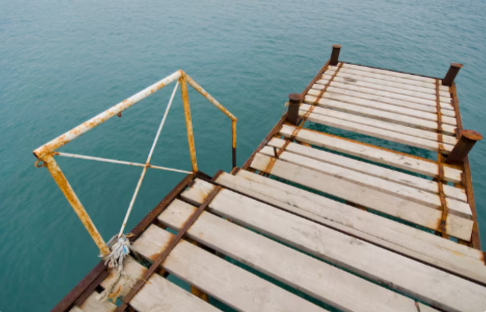A beautiful lakeside property is a dream for many, and a floating dock can be the perfect addition to enhance your access to the water. Unlike traditional stationary docks, floating docks are designed to rise and fall with the water level, making them an ideal choice for areas with fluctuating water.
However, with so many options available, selecting the right one can be a complex decision. Before you start looking at floating docks for sale, it’s essential to consider a range of factors to ensure you choose a solution that is durable, safe, and perfectly suited to your specific needs and environment.
Water Conditions and Environment
The first and most important factor to consider is the specific water conditions of your lake. Is the water calm and sheltered, or is it exposed to strong winds, currents, and waves? The environmental conditions will dictate the type of material and construction you should look for.
For calm waters, a modular plastic or lightweight aluminum dock may suffice. For rougher conditions, a more robust, heavy-duty design with steel frames and durable decking materials will be necessary to ensure stability and longevity.
Material and Durability
Floating docks are available in a variety of materials, each with its own pros and cons. Common options include aluminum, galvanized steel, treated wood, and plastic or composite decking. Aluminum is lightweight, corrosion-resistant, and requires minimal maintenance, making it a popular choice.
Steel is exceptionally strong and durable but can be susceptible to rust if not properly treated. Treated wood offers a classic aesthetic but requires regular maintenance.
Plastic or composite decking is low-maintenance and slip-resistant but can be more expensive. When browsing floating docks for sale, consider the material’s lifespan and maintenance requirements.
Flotation System
The flotation system is the foundation of a floating dock. The most common types of floats are made from encapsulated foam or air-filled plastic pontoons. Encapsulated foam floats are highly durable and resistant to punctures, and they won’t sink if damaged.
Air-filled pontoons are also popular but can be susceptible to leaks, which could compromise the dock’s buoyancy. Ensure the floats are made from high-quality, marine-grade materials that can withstand UV rays, freezing temperatures, and marine life without degradation.
Size and Configuration
Consider how you plan to use the dock and what size and configuration will best meet your needs. Will it be used for sunbathing, fishing, or mooring a boat? Do you need a simple straight dock or a more complex L-shape or T-shape design with a slip for a boat?
Many floating docks for sale offer modular sections that allow for customization and future expansion. Planning the layout in advance will help you choose a dock that is both functional and aesthetically pleasing.
Anchoring and Stability
A dock’s stability and safety are directly tied to its anchoring system. The method of anchoring will depend on the lake bottom and water depth. Common anchoring methods include piles, bottom anchors, or cable and chain systems attached to the shoreline.
A professional installer can assess your specific location and recommend the best anchoring solution to ensure your dock remains securely in place, even during severe weather. Do not compromise on the anchoring system, as it is crucial for the safety and security of your floating docks for sale.

